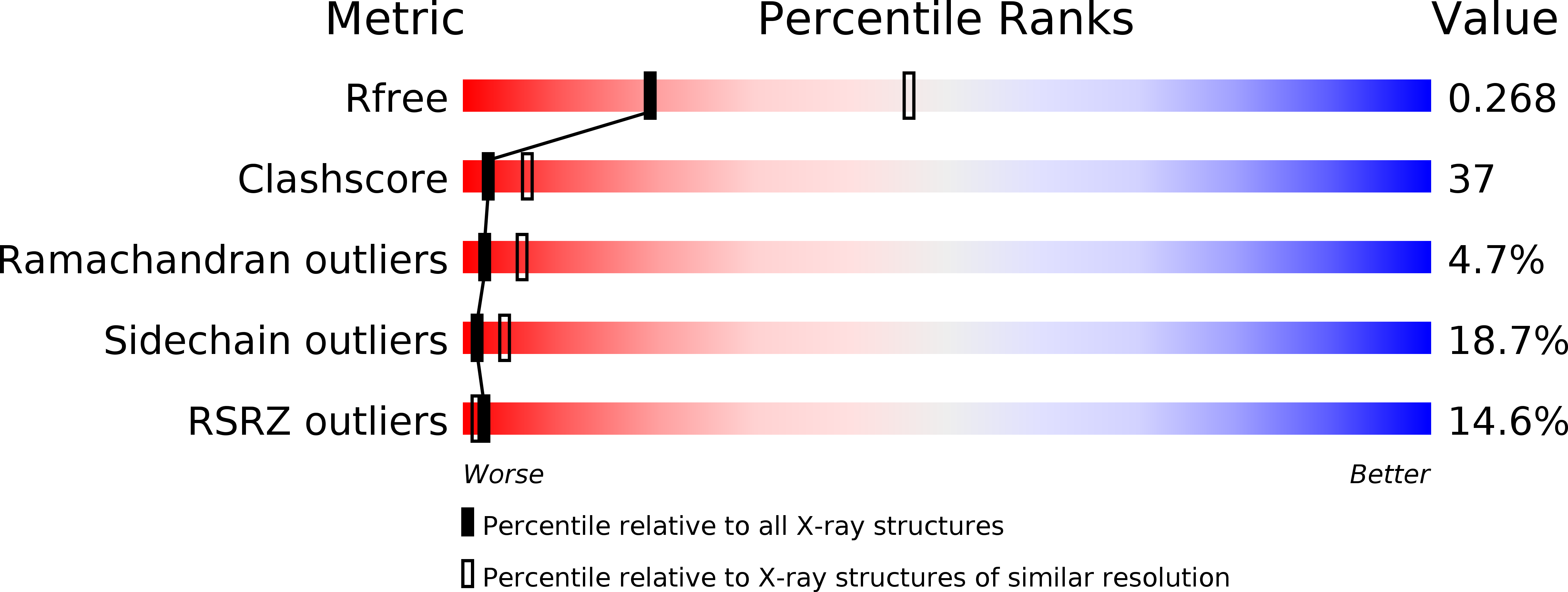Crystal structure of the Gtr1p-Gtr2p complex reveals new insights into the amino acid-induced TORC1 activation
Gong, R., Li, L., Liu, Y., Wang, P., Yang, H., Wang, L., Cheng, J., Guan, K.L., Xu, Y.(2011) Genes Dev 25: 1668-1673
- PubMed: 21816923
- DOI: https://doi.org/10.1101/gad.16968011
- Primary Citation of Related Structures:
3R7W - PubMed Abstract:
The target of rapamycin (TOR) complex 1 (TORC1) is a central cell growth regulator in response to a wide array of signals. The Rag GTPases play an essential role in relaying amino acid signals to TORC1 activation through direct interaction with raptor and recruitment of the TORC1 complex to lysosomes. Here we present the crystal structure of the Gtr1p-Gtr2p complex, the Rag homologs from Saccharomyces cerevisiae, at 2.8 Å resolution. The heterodimeric GTPases reveal a pseudo-twofold symmetric organization. Structure-guided functional analyses of RagA-RagC, the human homologs of Gtr1p-Gtr2p, show that both G domains (N-terminal GTPase domains) and dimerization are important for raptor binding. In particular, the switch regions of the G domain in RagA are indispensible for interaction with raptor, and hence TORC1 activation. The dimerized C-terminal domains of RagA-RagC display a remarkable structural similarity to MP1/p14, which is in a complex with lysosome membrane protein p18, and directly interact with p18, therefore recruiting mTORC1 to the lysosome for activation by Rheb. Our results reveal a structural model for the mechanism of the Rag GTPases in TORC1 activation and amino acid signaling.
Organizational Affiliation:
Cancer Institute, Shanghai Cancer Center, Department of Oncology, Shanghai Medical College, Fudan University, Shanghai 200032, China.


















